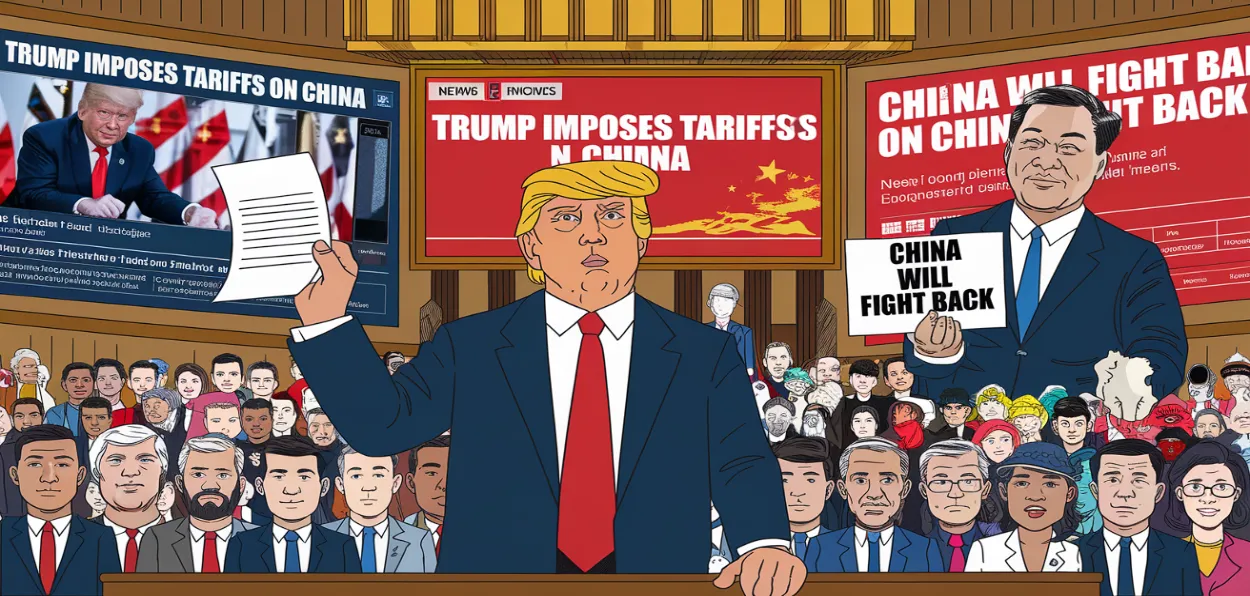
 Sushma Ramachandran
Sushma Ramachandran
The world is facing the prospect of a full-blown trade war in the coming months. The first shots were fired by U.S. President Donald Trump with his decision to impose punitive tariffs on his neighbours, Canada, Mexico, and China. Yet there is a reprieve, as the 25 percent import duties on the neighbours have been suspended until action is taken to curb illegal immigration and drug smuggling.
In the case of China, however, the ten percent tax has not been withdrawn. The result is that the latter has decided to retaliate by imposing 15 percent tariffs on U.S. goods. In addition, it has launched an anti-trust inquiry into tech giant, Google. In other words, battle lines have been drawn. Other countries like the European Union (EU) and South Africa are also on the firing line, judging by Trump’s latest comments.
The reason a global trade war is feared is that it can slow down international trade and disrupt economic growth in large parts of the world. It becomes even more worrying when the two biggest economies — the US and China — are in the fray as there can be adverse outcomes for their numerous trading partners.
Within the US, raising tariffs will lead to Chinese goods becoming more expensive. This, in turn, will bring inflationary pressures to bear on the US economy. It must be remembered that China is the third-largest trade partner for the US, following Canada and Mexico. Sino-US bilateral trade in goods and services was estimated at $758 billion in 2022, with Chinese imports accounting for $560 billion.
The negative impact is considerable in China’s case too. It loses easy access to its biggest and most lucrative market. Goods sold in the US will now lose some of their competitive edge. Other emerging economies like India, Vietnam, and Indonesia which have been seeking to compete against the Chinese dragon, may find it easier to match its rates. Yet it may be too early to consider the situation as positive for others as the range of Trump’s new trade policies is yet unknown.
One of the fall-outs of the trade war is the prospect that those facing the brunt would seek other markets for their products. In the case of China, which has a huge manufacturing base, it may seek to export goods at rock-bottom rates to emerging economies like India. While dumping goods may be resisted by hiking customs duties, another option is to raise disputes at the multilateral World Trade Organisation (WTO) though this body is increasingly losing its clout.
The other consequence of the trade war being set off by the first wave of Trump’s tariff hikes is likely to be the growth of protectionism. Such trends are bound to disrupt global supply chains that are predicated on low tariffs. This is apart from the spur to inflation and a potential rise in global interest rates in a repeat of the post-Covid scenario.
As for India, it must face the fact that it may also be the target of the tariff battles though it contributes only 3.9 percent to the U.S. trade deficit. Trump has already described this country as a tariff king. In light of this prospect, a strategy needs to be evolved to ensure that export competitiveness remains unaffected by policy changes in the U.S. As a first step, it must take a bet on the resilience of domestic industry and reduce domestic tariffs to global levels, given that customs duties here are higher than in most countries.
A signal of intent towards cutting these levies has been given in the budget proposals which have cut the number of rates while reducing duty levels in some sectors. It remains only a signal, for the time being, as effective duty rates remain unchanged owing to the imposition of an additional cess.
Second, it would be wise to become part of a regional trade bloc that can provide substantial benefits in terms of market access For instance, it can join the Comprehensive and Progressive Agreement For Trans-Pacific Partnership (CPTPP) which comprises eleven countries in the Indo-Pacific region. Neither the U.S. nor China are members of this grouping. This would be an advantage as the US would not be able to alter the free trade structure of the group. As for China, it must be recalled that India had declined to become a member of the Regional Comprehensive Economic Partnership (RCEP) owing to fears that goods from there would enter the domestic market through third-country sources. In the case of CPTPP, there would be no such problem.
And finally, it needs to step up the pace of concluding bilateral agreements with key trading partners like the European Union and the UK. It is no one’s case that negotiations should not be tough especially to deal with new non-tariff barriers like CBAM (carbon border adjustment mechanism) being imposed by the EU. Yet it should be possible to provide concessions in the areas of wine and spirits as well as automobiles which are considered critical by these countries.
In return, India should seek easier access for skilled professionals, as well as a reduction in the new NTBs imposed on the pretext of protecting Europe from carbon emissions.
It is thus clear that a multipronged policy needs to be evolved to navigate the new realities of the global trading system. It seems the world is set to become increasingly protectionist, at least in the short run. To deal with the changing scenario, India will have to alter its approach towards tariffs in general. The fact is, that domestic industry is stronger now than it has ever been in the past.
ALSO READ: India may be in a better position to deal with Trump's tariffs than other countries
In most sectors, it should be able to face the prospect of competition from international players. At the same time, considerable support must be given for access to major markets, through entering into bilateral and regional trading pacts. By doing so, India should be able to tackle the worrisome issue of trade wars without impact on its economy.
